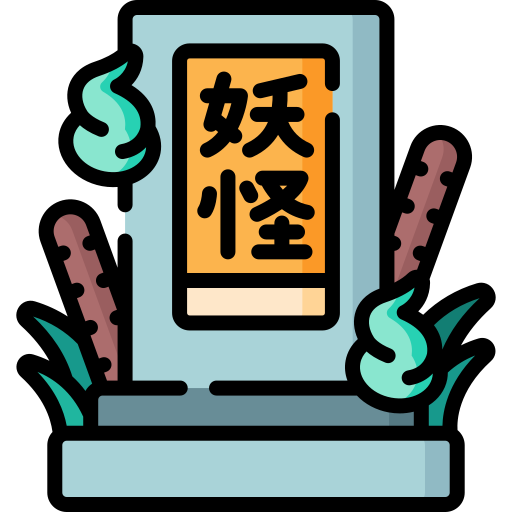Have you ever tried speaking Japanese, only to feel like your sentences are missing something crucial? That missing piece is likely Japanese particles – those small but mighty connectors that hold the language together. Without these essential elements, your Japanese might sound like a jumbled collection of words rather than meaningful sentences.
In this comprehensive guide, we’ll explore everything you need to know about Japanese particles, from their basic functions to practical usage in everyday conversation. Whether you’re a complete beginner or looking to refine your particle knowledge, this guide has you covered.
Want to start learning Japanese right away?
Access our Free Study Guides with grammar explanations, vocabulary lists, and study tips. All at no cost.
What Are Japanese Particles and Why Are They Important?
Japanese particles are small words that follow nouns, verbs, or sentences to indicate their grammatical function or relationship to other words. Unlike English, which relies heavily on word order to convey meaning, Japanese uses particles to show how words relate to each other in a sentence.
Think of Japanese language particles as the glue that holds sentences together—they mark subjects, objects, locations, directions, and much more. Without them, Japanese sentences would lose their clarity and precision.
For example, consider these two sentences:
Watashi wa neko ga suki desu. (I like cats.) Watashi ga neko wo kaimashita. (I bought a cat.)
The particles は (wa), が (ga), and を (wo) completely change the meaning despite using similar words. This demonstrates why mastering Japanese particles is essential for anyone serious about learning the language.
10 Essential Japanese Particles You Must Know
Let’s dive into the most frequently used Japanese particles that will immediately improve your speaking and comprehension skills.
1. は (wa) – The Topic Marker
Despite being written as “ha” in hiragana, this particle is pronounced “wa” when used as a particle. It marks the topic of a sentence—what you’re talking about.
Example: Watashi wa gakusei desu. 私は学生です。 “I am a student.”
In this sentence, は (wa) marks “watashi” (I) as the topic being discussed.
2. が (ga) – The Subject Marker
While は (wa) marks the topic, が (ga) specifically identifies the subject performing an action. It’s also used in questions and to emphasize new information.
Example: Dare ga kita no? 誰が来たの? “Who came?”
Naomi ga amerikajin desu. なおみがアメリカ人です。 “Naomi is American.” (emphasizing it’s Naomi, not someone else)
3. を (wo/o) – The Direct Object Marker
This particle marks the direct object of an action—the thing being acted upon. It’s always pronounced “o” despite being written as “wo” in romaji.
Example: Gohan wo tabemasu. ご飯を食べます。 “I eat rice.”
Here, rice (gohan) is the thing being eaten, so it’s marked with を.
4. に (ni) – Direction/Target/Time Marker
This versatile particle indicates direction, target, time, or location.
Example: Gakkō ni ikimasu. 学校に行きます。 “I go to school.”
Hachiji ni okimasu. 8時に起きます。 “I wake up at 8 o’clock.”

5. で (de) – Location of Action/Means
This particle indicates where an action takes place or the means by which something is done.
Example: Toshokan de benkyō shimasu. 図書館で勉強します。 “I study at the library.”
Densha de ikimasu. 電車で行きます。 “I go by train.”
6. の (no) – Possession/Relationship
The の particle shows possession or a relationship between two nouns, similar to “‘s” or “of” in English.
Example: Watashi no hon desu. 私の本です。 “It’s my book.”
Nihongo no sensei desu. 日本語の先生です。 “Japanese language teacher”
7. も (mo) – Also/Too
This particle means “also” or “too” and replaces は or が when used.
Example: Watashi mo ikimasu. 私も行きます。 “I will go too.”
8. から (kara) – From/Since
The から particle indicates a starting point in time or space.
Example: Kyoto kara kimashita. 京都から来ました。 “I came from Kyoto.”
Kuji kara hatarakimasu. 9時から働きます。 “I work from 9 o’clock.”
9. まで (made) – Until/To
This particle marks the endpoint of a time period or destination.
Example: Rokuji made hataraku. 6時まで働く。 “I work until 6 o’clock.”
Eki made arukimasu. 駅まで歩きます。 “I walk to the station.”
10. と (to) – With/And
The と particle connects nouns in a list (like “and”) or indicates accompaniment.
Example: Kōhī to kēki wo tabemashita. コーヒーとケーキを食べました。 “I ate coffee and cake.”
Tomodachi to eiga wo mimashita. 友達と映画を見ました。 “I watched a movie with my friend.”
Love Japan? Stay in the Loop!
Hi, I’m Jesse! Join 100+ learners and get my best Japanese learning tips straight to your inbox.
Common Challenges with Japanese Particles
Learning Japanese particles presents several challenges for language learners:
- No direct English equivalents – Many particles don’t have direct translations in English, making them conceptually difficult.
- Multiple meanings – Particles like に (ni) and で (de) have various functions depending on context.
- Particle combinations – Some particles work together (には, からも, etc.), creating new meanings.
- Knowing when to omit particles – In casual speech, Japanese speakers often drop particles, which can confuse learners.
As we explored in our Japanese Grammar Rules Beginners Must Know article, understanding these foundational elements requires practice and exposure to natural Japanese.
Advanced Particle Usage: Taking Your Japanese to the Next Level
Once you’ve mastered the basics, these more advanced particles will help refine your Japanese:
よ (yo) – Emphasis/Information
Added at the end of sentences to emphasize information or indicate that you’re sharing something the listener doesn’t know.
Example: Ame ga futte imasu yo. 雨が降っていますよ。 “It’s raining, you know!”
ね (ne) – Seeking Agreement
Similar to “right?” or “isn’t it?” in English, seeking confirmation or agreement.
Example: Ii tenki desu ne. いい天気ですね。 “Nice weather, isn’t it?”
や (ya) – Incomplete List
Used instead of と (to) when listing items that represent a sample, not a complete list.
Example: Ringo ya banana ga suki desu. りんごやバナナが好きです。 “I like apples, bananas, and such.”
Practical Tips for Mastering Japanese Particles
- Listen to native speakers – Pay attention to how particles are used in natural conversation.
- Practice with patterns – Create sentence patterns using different particles and substitute various nouns and verbs.
- Read aloud – Reading Japanese texts aloud helps internalize particle usage.
- Make mistakes confidently – Don’t be afraid to use particles incorrectly; native speakers will usually understand and may offer corrections.
- Use our resources – Check out our Hiragana & Katakana Cheat Sheet to master the writing systems, making particle recognition easier.
For those preparing for the JLPT exams, our JLPT N5 Kanji Cheat Sheet includes many common compounds that use these particles.
The Connection Between Particles and Honorifics
The way Japanese particles interact with honorifics creates nuanced expressions of respect and politeness. As we detailed in our Japanese Honorifics Explained article, combining proper particle usage with appropriate honorifics is essential for culturally appropriate communication.
When speaking to superiors, certain particle combinations (such as でございます instead of です) can elevate your language to a more respectful register.
Frequently Asked Questions About Japanese Particles
How many particles are there in Japanese?
There are approximately 188 Japanese particles in total, though everyday conversation typically uses about 20-30 core particles.
What is the most important Japanese particle to learn first?
The topic marker は (wa) is considered the most important Japanese particle to learn first, as it establishes what you’re talking about in a sentence.
Can Japanese sentences work without particles?
While grammatically incomplete, many casual Japanese sentences omit particles, especially in spoken language. However, beginners should master particles before attempting to drop them.
How are particles different from postpositions?
Japanese particles are actually classified as postpositions, meaning they come after the words they modify (unlike prepositions in English, which come before).
Do all Japanese dialects use the same particles?
No, some Japanese dialects use unique particles or different pronunciation of standard particles. For example, in Kansai dialect, は (wa) may be pronounced as や (ya) in certain contexts.

Conclusion: Your Path to Japanese Particle Mastery
Mastering Japanese particles might seem challenging at first, but with consistent practice and exposure, they’ll become second nature. Remember that even native Japanese speakers occasionally debate the correct particle usage in certain contexts!
To continue your Japanese journey, explore our comprehensive resources, including our 100+ Essential Japanese Phrases and Counting to 100 in Japanese guides. These complementary skills will help you put your particle knowledge into practice in real conversations.
Understanding Japanese language particles isn’t just about memorizing rules—it’s about developing an intuition for how the language flows. Keep practicing, stay curious, and soon you’ll find yourself using these vital connectors with confidence and ease.
What Japanese particle are you finding most challenging? Share your experiences in the comments below!
Ready to take your Japanese learning to the next level? Download our free resources including the Hiragana & Katakana Cheat Sheet, JLPT N5 Kanji Guide, and more by visiting our Resources Page today!
Connect with Fellow Japanese Learners!
Ask questions, get study tips, and take part in weekly challenges. Join a community of motivated learners exploring both the language and culture of Japan!




